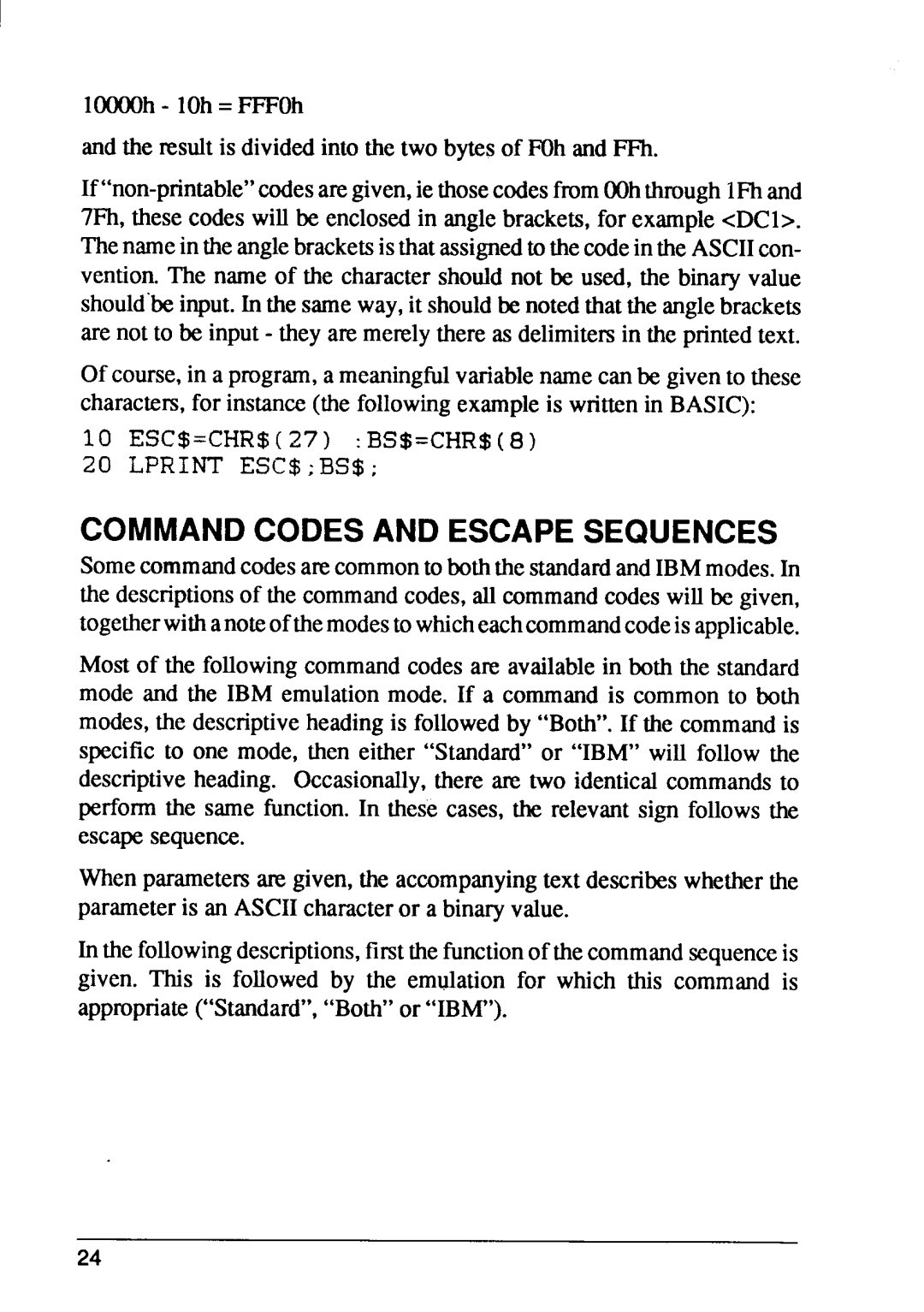
1000Oh- IOh= FFFOh
and the nxdt is dividedinto the two bytesof F7)hand FFh,
If
Of course, in a program, a meaningful variable name can be given to these charactem, for instance (the following example is written in BASIC):
10ESC$=CHR$(27) :BS$=CHR$(8)
20LPRINT ESC$;BS$;
COMMANDCODESAND ESCAPESEQUENCES
Somecommandcodesarecommonto boththe standardandIBMmodes.In the descriptionsof the commandcodes,all commandcodeswill be given, togetherwithanoteofthemodestowhicheachcommandcodeis applicable.
Most of the following command codes are available in both the standard mode and the IBM emulation mode. If a command is common to both modes, the descriptive heading is followed by “Both”. If the command is specific to one mode, then either “Standard” or “IBM” will follow the descriptive heading. Occasionally, there am two identical commands to perform the same function. In these cases, the relevant sign follows the escape sequence.
Whenparametemare given,the accompanyingtext describeswhetherthe parameteris an ASCIIcharacteror a binaryvalue.
In the following descriptions, first the function of the command sequence is given. This is followed by the emulation for which this command is appropriate (“Standard”, “Both” or “IBM”).
24
